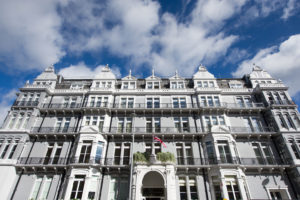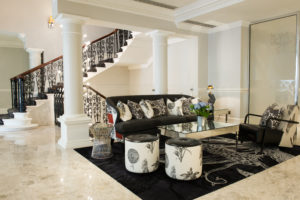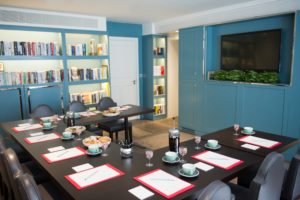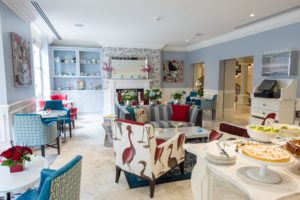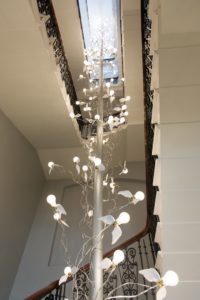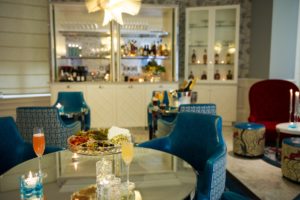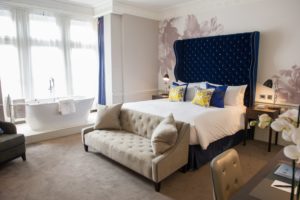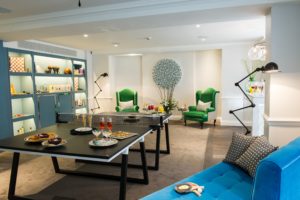The Ampersand Hotel, London
Introduction by Nancy Upper
In her 17 June 2015 BBC article on art history, Victoria and Albert: How a royal love changed culture, Lucinda Hawksley explains that Queen Victoria (1819-1901) and her consort Albert (1819-1861) loved the arts as much as they loved each other. They collected and commissioned paintings and sculptures, enjoyed poetry, regularly attended theater and concerts, supported artisans, and embraced and promoted the new medium of photography.
“[T]he couple also commissioned love tokens from jewelers,” says Hawksley. “When Prince Albert gave Queen Victoria an engagement ring – an item little known in Britain in the first half of the 19th Century – he began a new fashion that has endured ever since.”
Lynda Smith reveals in her 7 July 2016 Royal Albert Hall blog that “Although Albert had no official power or duties … , he was a man of extraordinary vision, and [he and Victoria] endeavored to share their passion for global arts, education and culture with the nation.”
Smith continues, “As part of these aims Prince Albert and Henry Cole [British designer, civil servant, inventor] masterminded the Great Exhibition of 1851, the first international exhibition of manufactured products.” A magnificent cast iron and glass structure dubbed The Crystal Palace was erected in Hyde Park to house the Great Exhibition.
Says Smith —
With some six million visitors attending over the five months it was open, the Great Exhibition turned a profit of £180,000. As President of the Royal Commission for the Exhibition, the Prince used these profits to purchase the area south of the Festival site. On the land, Prince Albert had ambitions to create one of the most successful cultural quarters in the world, where visitors could access education in history, culture, art, music and science in free museums and institutions.
People coined the name Albertopolis for the educational and museum area that Prince Albert envisioned for South Kensington. His plan took shape with the opening, in 1852, of the Victoria & Albert Museum of decorative arts and design and, in 1857, of the Science Museum.
On 14 December 1861, Albert died of typhoid fever. His death overwhelmed Victoria with grief. She avoided public appearances and wore black for the rest of her life.
After a period of mourning, Henry Cole sought Victoria’s permission to proceed with the project he and Albert had discussed after the Great Exhibition’s success: a permanent exhibition hall to showcase advances in arts, manufactures, and commerce. She agreed on the condition that a substantial memorial to Albert be built as well.
Work on the Albert Memorial began in 1863. On 20 May 1867, Queen Victoria, dressed in black, laid the cornerstone for what was to be called the Central Hall of Arts and Sciences. In his 20 May 2014 blog, Matt Griffin writes —
Reports at the time said the Queen spoke “indistinctly, slowly and under great emotional strain”, before using an especially-made trowel to lay the stone … It was at this moment when she famously announced that the building was to be called the Royal Albert Hall of Arts and Sciences, in memory of her beloved ‘Bertie.’
Griffin sees into Victoria’s heart. Daryl Bennett quotes the Queen‘s public statement —
As she laid the foundation stone she said: ‘It is my wish that this hall should bear his name to whom it will have owed its existence, and be called The Royal Albert Hall of Arts and Sciences’.
In 1881, the Natural History Museum was established in South Kensington and, in 1882, the Royal College of Music. The Government School of Design founded in 1837, was located in Somerset House in the Strand. After the Great Exhibition, it was relocated to South Kensington and transformed to include art. In 1896 the school received the name Royal College of Art.
In the midst of this cultural abundance, a grand Victorian edifice was built in 1888 on Harrington Road to provide townhouses for locals and visitors. Hotels have occupied the site ever since.
In 2011, private investors bought the property for an undisclosed sum. After a more than 13-million-pound modernization, including air conditioning, The Ampersand Hotel opened its doors to the public in July 2012, a soft-launch timed to coincide with The London 2012 Olympic Games. The hotel opened in full in August 2012.
On 18 September 2013, TravPR.com reported that The Ampersand Hotel would “champion the humble book” by hosting a book club and author events in its own library. The first book club event took place 07 October 2013 with author Anne Zouroudi presenting her Greek murder mystery, The Feast of Artemis. Noted TravPR —
Taking inspiration from the book’s setting and transporting guests from London to Greece, the evening’s cocktail will be a Dirty Martini with a Mediterranean twist, combining Metaxa, olive juice, Gin Mare and rosemary.
In January 2014, I wrote to the hotel’s Director of Sales and Marketing, Marites Araneta, explaining my Power of Ampersand book and inviting her to send an essay about The Ampersand Hotel, with photos, to feature in my book’s Travel chapter.
She kindly obliged, and collaborated with the hotel’s public relations firm, LDR London, to deliver the inviting essay and tempting pictures below.
THE AMPERSAND HOTEL
Courtesy of The Ampersand Hotel. All photos by Amy Murrell.
Set in the heart of South Kensington, The Ampersand Hotel is on the doorstep of Hyde Park and Knightsbridge, with easy access to the best that London has to offer.
The Ampersand Hotel’s unique concept is inspired by both the capital’s world-famous cultural district and the iconic ampersand symbol, to illustrate the hotel’s role in connecting its guests to the cultural treasures of South Kensington.
Inside the door, guests enter a kaleidoscopic world with a design aesthetic inspired by the surrounding world – famous museums of Natural History, Science, and Victoria & Albert, as well as the Royal Albert Hall, all devoted to botany, music, geometry, ornithology, and astronomy.
These five themes are intricately incorporated throughout The Ampersand Hotel, from the 20-foot staircase installation [a spire of light by Ingo Maurer] accented with goose feather wings to the bespoke upholstery featuring flowers and ferns. Individually designed guest rooms and public spaces, spread over seven floors, include five suites, all of which have their own balcony offering views of London’s skyline.
The ampersand symbol can be seen throughout the hotel; from unique pieces of artwork to the typographic pairings that are used as an extension of the ampersand concept:
- Peace & Quiet (door sign)
- Cats & Dogs (umbrella)
- Saints & Sinners (drinks menu)
- Washed & Pressed (linens, clothing)
- Clean & Tidy (whole hotel)
